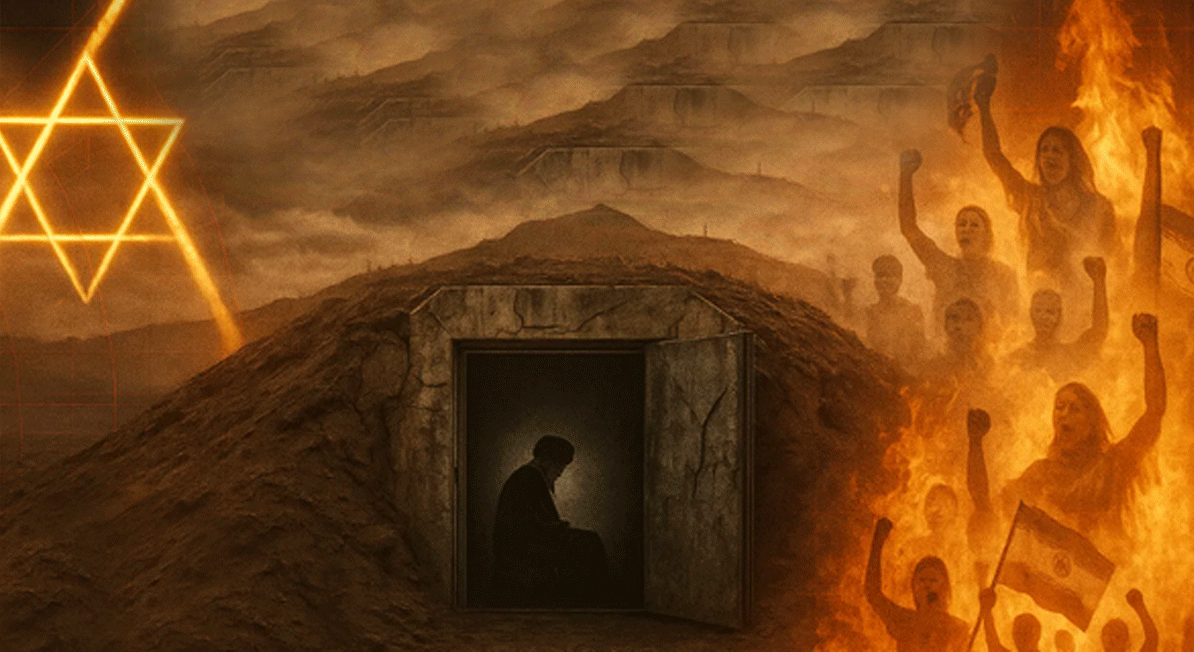


As missiles close in, the Supreme Leader hides underground with his close aides, security and family. But this game if “survival” won’t save the Islamic Republic—only delay its collapse.
Two well-placed sources inside Iran told Iran International that shortly after Israel launched airstrikes on Tehran early Friday morning, Ali Khamenei was moved to an underground bunker located in Lavizan, in northeastern Tehran.
According to the report, all members of the Supreme Leader’s family—including his influential son Mojtaba—are currently sheltering with him.
Sources added that this is not the first time the Khamenei family has taken refuge underground. During both phases of Israel’s earlier True Promise operations, the family was also relocated to secure locations. At that time, Mojtaba stayed close to his father, but Khamenei’s two other sons, Masoud and Mostafa, were notably absent.
The Israeli strikes have continued into Sunday, expanding beyond Tehran to multiple Iranian cities. For the first time, Israel targeted the city of Mashhad—located 2,300 kilometers from Israel’s borders.
A diplomatic source in the Middle East told Iran International that the strike on Mashhad was intended as a personal warning to Khamenei: there is no safe place left in Iran.
The same source revealed that Israel had the opportunity to eliminate Khamenei on the first night of the operation but intentionally refrained. Instead, Israeli leadership decided to keep him alive to give the regime one final chance to dismantle its uranium enrichment program voluntarily.
This moment mirrors a similar ultimatum once issued by then–U.S. President Donald Trump, who gave Khamenei a two-month window to agree to end Iran’s nuclear program as part of negotiations with Washington. Khamenei ignored that offer—just as he dismissed repeated Israeli warnings.
With Israel’s current air campaign now underway, the offer has resurfaced. Khamenei is once again being given a final opportunity—this time under fire—to confront the reality of Israel’s military capabilities and order the full dismantling of Tehran’s nuclear enrichment efforts.
On June 14 (Khordad 25), Israeli Prime Minister Benjamin Netanyahu declared that the ultimate outcome of this war could be regime change in Iran.
He said bluntly:
“The Iranian regime is extremely weak. It only has two things left: its nuclear bomb program and its ballistic missiles.
They certainly don’t have the people. Eighty percent of Iranians are ready to bring down these religious thugs… For 46 years, they’ve been killing and suppressing the people—shooting women over hijabs, gunning down students. The people of Iran are hungry for freedom.”
—Benjamin Netanyahu
Khamenei’s Exit Plan Could Burn a Nation
This is a turning point—but don’t underestimate the enemy’s instinct for survival.
The IRGC may try to hijack this moment with a “reformist” rebranding, offering false promises of civilian leadership to pacify the masses and hold onto power. But no regime born of blood and built on lies can be redeemed.
And as for Khamenei—getting him out of Iran may become the most difficult extraction in modern history. The longer Israel keeps pressure on Tehran, the fewer escape routes remain.
There’s one more possibility we must not ignore:
We should remember: in the mid-2000s, Khamenei told senior IRGC commanders in closed sessions:
“If foreign forces ever enter Iran, we will burn this country to the ground. The people are our shield and our hostages.”
—Ali Khamenei (reported statement, c. 2005–2007)
If cornered, the regime may escalate, not retreat. A desperate theocracy armed with missiles and martyrdom doesn’t go down quietly.
But no matter how it ends, the myth of their invincibility is shattered—and the Iranian people, once silenced, may finally rise to finish what history has started.
